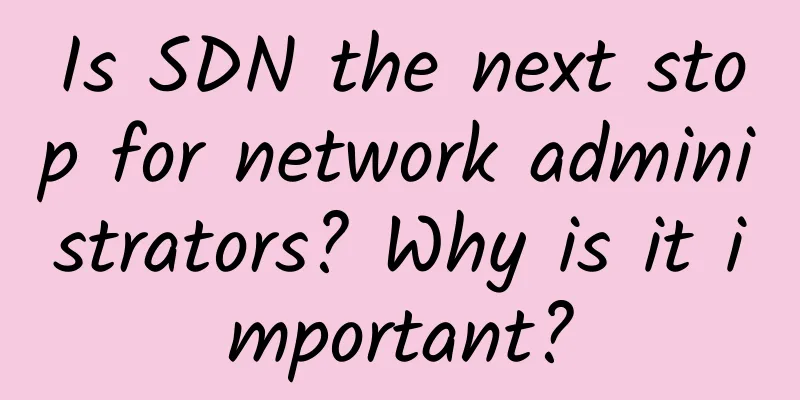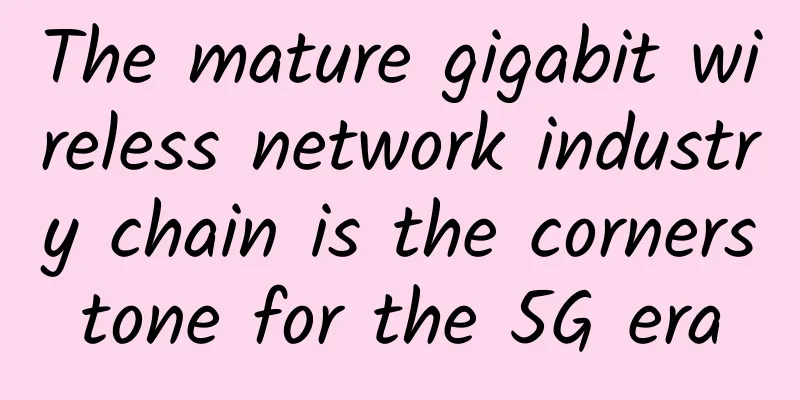How to implement a custom serial communication protocol?

|
This article is reprinted from the WeChat public account "strongerHuang", the author is strongerHuang. Please contact the WeChat public account "strongerHuang" to reprint this article. Some beginners always think that communication protocol is a very complicated knowledge, and think it is very profound, which leads to them not knowing how to learn it. At the same time, occasionally some readers ask questions about the serial port custom communication protocol. Today, let’s write about the serial port communication protocol. It is not as difficult as you think. 1. What is the communication protocol?The communication protocol is not difficult to understand. It is a protocol that must be followed for communication between two (or more) devices. Baidu Encyclopedia's explanation: Communication protocols refer to the rules and agreements that two entities must follow to complete communication or services. In order for multiple data communication systems in different geographical locations to work together to achieve information exchange and resource sharing, they must have a common language. What to communicate, how to communicate, and when to communicate must follow certain mutually acceptable rules. This rule is the communication protocol. Relatively speaking, many readers have bought some modules based on serial communication. Many modules based on serial communication on the market have custom communication protocols, some of which are relatively simple and some are relatively complex. Let's take a very simple serial communication protocol as an example: for example, only a temperature value is transmitted, and there are only three bytes of communication protocol:
Doesn't this look simple? It is also a communication protocol. It’s just that the application scenarios of this communication protocol are relatively simple (one-to-one between two devices), and at the same time, it has many disadvantages. 2. Problems caused by overly simple communication protocolsI believe everyone understands the communication protocol with only three bytes above. Although it can communicate and transmit data, it has a series of problems. For example: multiple devices are connected to a bus (such as 485), how to determine to whom the transmission is sent? (no device information) For example: In a noisy environment, can you ensure that the transmitted data is correct? (No verification information) For example: I want to transmit multiple data of uncertain length, what should I do? (no length information). I believe that friends who have done custom communications understand the above series of problems. Therefore, more "protocol information" should be agreed upon in the communication protocol to ensure the integrity of the communication. 3. Common contents of communication protocolThe communication protocol based on the serial port is usually not too complicated. Because of the serial port communication rate, anti-interference ability and other reasons, it is a very lightweight communication protocol compared to the communication protocol such as TCP/IP. Therefore, in addition to some common communication protocols (such as Modubs and MAVLink) based on serial port communication, engineers often customize communication protocols according to their own project conditions. The following briefly describes some key points of common custom communication protocols. (These are some common agreement contents. The agreement contents may be different in different situations.) 1. Frame header The frame header is the beginning of a frame of communication data. Some communication protocols have only one frame header, while others have two, for example: 5A and A5 as frame headers. 2. Device address/type Device address or device type is usually used between multiple devices to facilitate the distinction between different devices. In this case, it is necessary to describe various device type information in the protocol or appendix to facilitate developers' coding queries. Of course, for some fixed communications between two devices, this option may not be available. 3. Commands/Instructions Commands/instructions are quite common, and different operations are usually distinguished by different commands. For example: Temperature: 0x01; Humidity: 0x02; 4. Command type/function code This option further supplements the command, such as read and write operations. For example: Read Flash: 0x01; Write Flash: 0x02; 5. Data length The data length option may be moved to the front device address by some protocols, and the command information will be counted in the "length". This is mainly to facilitate the statistics of received data length during protocol (receiving) parsing. For example, sometimes you need to transmit one valid data, sometimes you need to transmit multiple valid data, or even transmit an array of data. At this time, the transmitted frame of data is indefinite length data, so it must be constrained by [data length]. Some are one byte in length, ranging from 0x01 to 0xFF. Some may require more to be transmitted at one time, so they are represented by two bytes, ranging from 0x0001 to 0xFFFFF. Of course, some communications have a fixed length (for example, only two data, temperature and humidity, are transmitted), and the protocol may not have this option. 6. Data There is no need to describe the data, it is the real data you transmit, such as temperature: 25℃. 7. Frame tail Some protocols may not have a frame tail, which should be an optional option. 8. Verification code The checksum is a relatively important content. Generally, formal communication protocols have this option. The reason is very simple. Communication can be easily disturbed or other reasons can cause errors in transmitted data. If there is a check code, data transmission errors can be avoided more effectively. There are many ways to verify the code. Checksum and CRC are relatively common and are used as verification methods in custom protocols. Another point is that some protocols may place the checksum at the second to last position and the frame tail at the last position. 4. Communication protocol code implementationThere are many ways to implement custom communication protocols in code. As the saying goes, "all roads lead to Rome". You only need to write the implementation code according to your protocol. Of course, when implementing it, you need to consider the actual situation of your project. For example, if there is a lot of communication data, you need to use a message queue (FIFO). For example, if the protocol is complex, it is best to encapsulate the structure. Here are some codes I used before. They may not describe more details, but some ideas can be used as reference. 1. Message data sending a. Send each byte directly through the serial port This is understandable to novices. Here is an example of a previous DGUS serial screen:
b. Send through message queue Based on the above, use a buf to hold the message, then "package" it into the message queue and send it out through the message queue method (FIFO).
c. Use "structure" instead of "array SendBuf" method The structure is more convenient for array reference and management, so the structure method is more advanced and more practical than the array buf. (Of course, if there are many members, using temporary variables will also cause too much stack to be occupied) for example:
d. Others There are many ways to send data via serial port, such as using DMA instead of message queue. 2. Message data reception Serial port message reception usually uses serial port interrupt reception. Of course, there are also rare cases where data is received by polling. a. Regular interrupt reception Taking the DGUS serial port screen as an example, a simple and common interrupt receiving method is described:
b. Add timeout detection The received data may be half received and the interrupt may be interrupted for some reason. At this time, timeout detection is also necessary. For example: use the redundant MCU timer to do a timeout counting process, receive a data, start timing, if the next data is not received within 1ms, discard this packet of data (previously received).
c.More There are many ways to implement receiving, just like sending. For example, receiving can also use the structure method. But one thing is that you need to code according to your actual needs. 5. FinallyThe above custom protocol content is for reference only. What you use and how many bytes you occupy depend on your actual needs. There are many differences in custom communication protocols based on serial ports. For example, the MCU processing power, the number of devices, the communication content, etc. are all related to your custom protocol. Some may only require a very simple communication protocol to meet the requirements, while others may require a more complex protocol. Finally, I would like to emphasize two points: 1. The above examples are not complete codes (some details are not described), but are mainly for everyone to learn this programming idea or implementation method. 2. A good communication protocol code must have certain fault tolerance, such as: sending completion detection, receiving timeout detection, data error detection, etc. Therefore, the above code is not a complete code. |
>>: Why does the HTTP request return 304?
Recommend
Operators competing in the digital service market for SMEs are facing opportunities for transformation and development
Recently, the Ministry of Industry and Informatio...
5G spectrum competition is "fighting" and deployment is surging
Recently, T-Mobile urged the FCC to complete the ...
SmartHost newly launched VPS distribution starting from $6.95/month, multiple data centers available
I received an email from SmartHost, informing me ...
What are the challenges of using multiple team collaboration apps?
Many companies are already using various team col...
Summary information: Qingyu Internet/Jinpan Cloud/SaltyFishCloud/EasyTan Cloud/TianShang Cloud/Gangan Cloud
I will continue to share some VPS merchant inform...
Revolutionizing Networking with Edge Computing
Compared with cloud computing, edge computing foc...
Why can't I access my home computer from work?
The previous article "Why do all our home IP...
Three key considerations for upgrading your business to 5G
“While the discussion and hype around 5G has focu...
5G is knocking on the door, but where is the infrastructure?
New Delhi: India is on the brink of the next gene...
The Current State and Future of IoT Connectivity
In every sense, the Internet of Things is about c...
LTE vs. 5G: What’s the difference?
For years, it seemed like the hype about 5G would...
HostDare: 20% off on CN2 GIA line in Los Angeles, starting at $28.7/year, 25% off on NVMe series QSSD, starting at $23.2/year
HostDare has launched a summer promotion. From no...
CheapWindowsVPS: $9/month KVM-4GB memory, 50G SSD hard disk, 1Gbps unlimited traffic, 9 computer rooms
CheapWindowsVPS is a foreign hosting company esta...
Global IoT connection technology market forecast by type in 2025
As the number of global IoT deployments continues...









